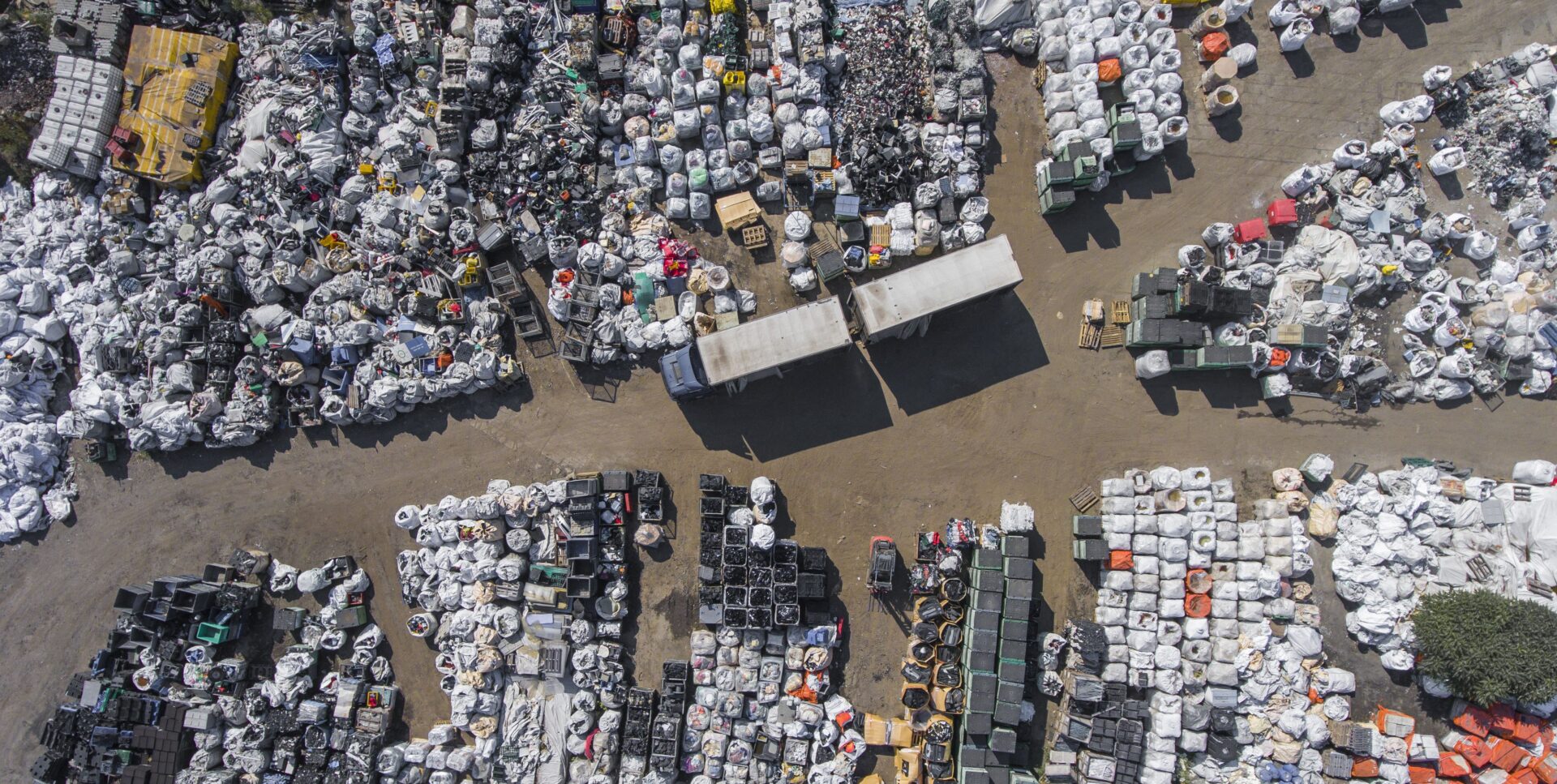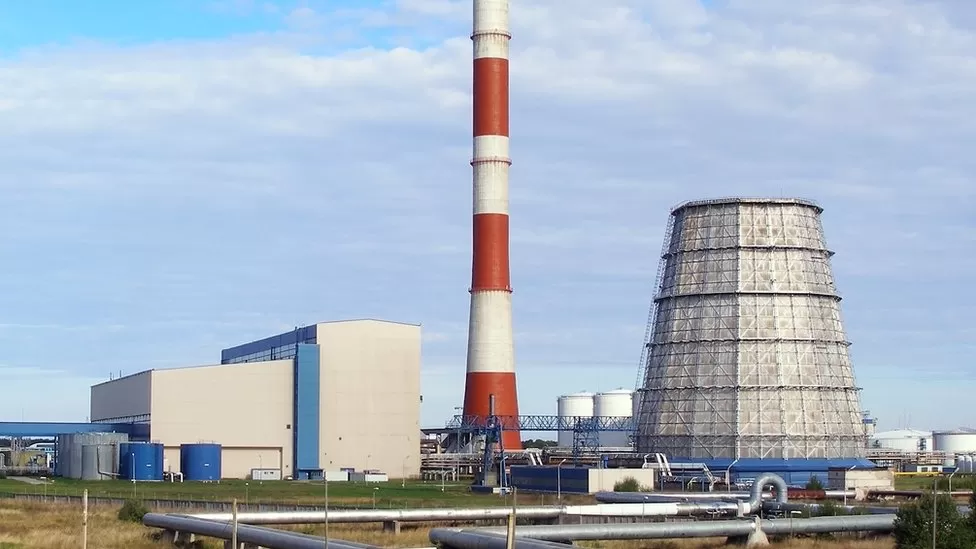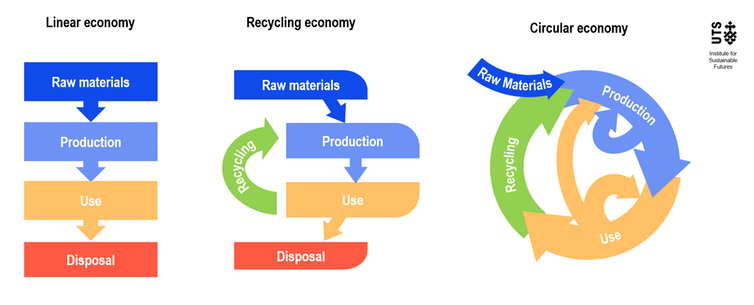
MOOC: Auditing waste management
2.1. Main principles of waste management
Polluter pays
Polluter-pays is a principle which is enacted to make the party responsible for producing pollution pay for the damage done to the environment. Please refer to the introductory environmental audit MOOC for more on polluter-pays principle.
With respect to waste management, the polluter-pays principle refers to the requirement for a waste generator to pay for appropriate disposal of unrecoverable material. Extended producer responsibility scheme is for example one practical mechamism for implementing the polluter-pays principle (described in more detail in Module 3).
Resource efficiency
Resource efficiency reflects the understanding that global economic growth and development cannot be sustained on the basis of current production and consumption patterns. Globally, humanity extracts more resources to produce goods than the planet can replenish. Resource efficiency is the reduction of the environmental impact from the production and consumption of these goods, from final raw material extraction to last use and disposal. This process of resource efficiency can address sustainability.
Life cycle of a product
The product life cycle illustrates a process in which raw materials are turned into products and consumed. Once their useful life expires, they are discarded as waste. Thereafter waste can be reused, recycled or disposed.

Figure 9. Life cycle of a product
Source: www.lifecycleinitative.org
Waste management hierarchy
The waste management hierarchy illustrates the environmental impact of different waste management methods and has implications on the sustainability of the governing of waste.
The European Union Waste Framework Directive [] introduced for the first time the five-step waste hierarchy system into waste policies.
The waste management hierarchy makes preventing waste a top priority. However, when waste is created, priority is given to preparing it for re-use, then recycling and then recovery. The least desirable option is waste disposal e.g. in landfill. The video below presents the waste management hierarchy and explains how waste is processed using different methods.
Video. Waste management hierarchy
Source: National Audit Office of Estonia
For example, buying apples from a local market without special packaging instead of buying apples wrapped in plastic packaging from a supermarket is preferable according to the waste hierarchy (prevention). However, if the plastic wrapping has already been purchased, there are further choices where the waste hierarchy can assist: there may be options for re-using the wrapping in the household for some purpose. However, re-use is not an option in large-scale waste management for plastic wrapping for hygienic reasons. Moving further to recycling would be the next option. In this case the plastic wrapping would be ground into smaller parts to use in the making of new plastic. Compared to recycling, recovery (e.g. incinerating the material) to produce energy is a less desired option. On the other hand, the incineration of waste, which is done in special burners at a high temperature (Figure 10), is often used in regions of high population density. Energy from incineration can then be used close to production for the surrounding population (e.g. heating or electricity). Less preferable would be disposing the waste (e.g. landfilling). To date, landfilling has been the most common waste management method in many countries – despite the hazards of leakages, unpleasant odour, pests and other problems that come with it.
Even less preferable is dumping the waste on the street or in nature – neither of which is a waste management method, but a prohibited activity.

Figure 10. Iru waste-to-energy plant in Estonia. The plant uses fume scrubbing technology to remove dioxins, heavy metals and dust particles helping to reduce/prevent air pollution.
Source: https://www.bbc.com/news/blogs-news-from-elsewhere-37562149
Circular economy and blue economy
Waste volumes can be looked on as a resource. Such thinking would also lead us closer to solving the problem of waste. The concept of waste management is alone becoming insufficient for solving waste problems and is even likely to be replaced with the concept of resource management in the future.
The circular economy is a regenerative system in which resource input and waste, emissions and energy leakage are minimized by slowing, closing and narrowing energy and material loops. This can be achieved via long-lasting design, maintenance, repair, reuse, remanufacturing, refurbishing, recycling and upcycling. This contrasts with the linear economy, which is a ‘take, make, dispose’ model of production (see Figure 11).
Figure 11. From linear economy to circular economy
Source: https://theconversation.com/the-planned-national-waste-policy-wont-deliver-a-truly-circular-economy-103908
For a more elaborate visualization of circular economy, please see https://ellenmacarthurfoundation.org/circular-economy-diagram
The circular economy is based on three following principles:
- Design out waste and pollution
- Keep products and materials in use
- Regenerate natural systems
 CASE STUDY: UPCYCLING AND UPMADE®
CASE STUDY: UPCYCLING AND UPMADE®
| Reet Aus, Estonian fashion designer and entrepreneur has been dedicated to sustainable design and upcycling for the past 20 years. She also has firsthand international experience with textile waste issues through her quest for eliminating wastage in this industry. The following video case study illustrates through her business case UPMADE® the concept of circular economy: Video. Circular economy illustrated by UPMADE®Source: National Audit Office of Estonia |
 AUDIT CASE: PRODUCTION OF PLASTICS IN A CIRCULAR ECONOMY
AUDIT CASE: PRODUCTION OF PLASTICS IN A CIRCULAR ECONOMY
The Netherlands – Reducing the use of plastics In 2019, the Netherlands Court of Audit (NCA) published a report on governmental efforts to reduce the use of plastics. The audit team investigated this matter from the viewpoint of achieving a fully circular economy wherein no new plastics would be produced in the country by 2050. Among other things, the size and division of policy costs between different branches of government as well as prevention, recycling and re-use policies were analysed. The audit revealed that little had been done beyond promoting the recycling of plastic packaging which constituted only a part of the whole plastic flow in the country. NCA also brought out that an estimated 60% of plastics was incinerated annually despite Dutch people’s good sorting habits due to the recycling system being largely dependent on the Packaging Waste Fund and therefore applicable to packaging only. Auditors consequently recommended the auditee to extend recycling policies to all plastics and put more effort into avoiding the production and use of new plastics. |
An emerging visionary concept, the blue economy, includes the circular economy but goes beyond it. Both are about radical resource productivity, zero waste and sustainability. Both incorporate concepts such as systems thinking and design, cradle-to-cradle, closed loop, upcycling, reuse, recycling, remanufacturing, industrial ecology, renewable energy and sharing economy. The blue economy goes further to strengthen competitiveness by lowering costs and pursuing a more effective economy of scale. It is a business model which generates more value and multiple benefits (including social and environmental) with locally available resources. The concept considers that natural systems cascade nutrients, matter, and energy – waste does not exist and any by-product is the source for a new product. By shifting away from the core business or core competence that force companies to focus on one industry, considering local economic development as a priority. This ensures that local purchasing power increases and more money circulates regionally, enabling growth without inflation through an increase in local production of goods and services. A core set of over 100 pre-screened innovations have been developed inspired by the blue economy concept: for example, stone-based paper production [] and growing mushroom on coffee-waste (see in the video below). The design approach is always inspired by nature, copying ecosystem design frameworks that aim for everything to be employed and nothing to be wasted. []
 For an introduction to the blue economy concept, see the following video:
For an introduction to the blue economy concept, see the following video:
Video. Blue economy
Source: https://www.youtube.com/watch?v=1af08PSlaIs
 An interview with the founder of the ‘blue economy’ concept, Mr Gunter Pauli, who talks about the changes needed from the public sector’s perspective, as well as why auditing waste is important:
An interview with the founder of the ‘blue economy’ concept, Mr Gunter Pauli, who talks about the changes needed from the public sector’s perspective, as well as why auditing waste is important:
Awareness-raising
Lack of awareness of hazards related to waste and inadequate training in safe waste management may lead to the failure of sound waste management. Government authorities therefore undertake information activities to influence public attitudes and encourage environmentally sound behaviour. Such activities can be directed at consumers to increase their general ecological awareness or their willingness to sort waste at source and/or deliver certain waste to collection points.
Example of an awareness-raising campaign – World Clean-up Day [] In 2023, 19.1 million participants from 198 countries and territories participated in the World Cleanup Day, which aims to make our planet a cleaner and healthier place to live. These people collected a total of almost 219 thousand tons of waste.Since 2018, the World Cleanup Day has become one of the largest civil movement in human history, uniting 211 countries and territories – covering 95% of UN-listed countries – around the world and 91 million volunteers, representing 1.1% of the world’s population. trying to create a cleaner planet. During this time, 543 thousand tons of improperly handled waste have been collected. |



